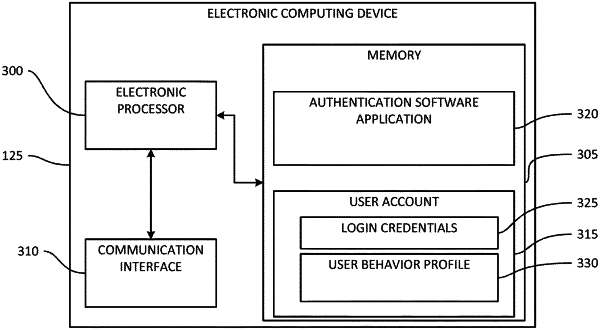| CPC H04L 63/0823 (2013.01) [H04L 63/04 (2013.01); H04L 63/0861 (2013.01); H04L 63/20 (2013.01); H04L 67/306 (2013.01)] | 20 Claims |

|
1. A system for utilizing behavioral features to authenticate a user entering login credentials, the system comprising:
an electronic processor, the electronic processor configured to
receive a request to access a user account, the request including biometric data associated with a user and behavioral features associated with a device, wherein the biometric data is captured by the device while the user interacts with the device by entering login credentials to access the user account, and wherein the login credentials include only non-biometric data;
determine whether the biometric data is limited biometric data that without additional information is insufficient to authenticate the user entering the login credentials to access the user account;
responsive to determining that the biometric data is the limited biometric data that without additional information is insufficient to authenticate the user entering the login credentials to the user account, compare the behavioral features included in the request to second behavioral features included in a user behavior profile associated with the user account, the second behavioral features included in the user behavior profile include third behavioral features associated with one or more previous requests to access the user account;
based on the comparison, generate one or more scores including at least one selected from a group comprising a recency score, a frequency score, a novelty score, and a temporality score;
for each of the one or more scores,
compare a score to a predetermined threshold; and
based on the comparison of the score to the predetermined threshold, adjust a match value; and
compare the match value to one or more predetermined thresholds to determine whether the behavioral features included in the request to access the user account authenticates the user, does not authenticate the user, or is inconclusive.
|